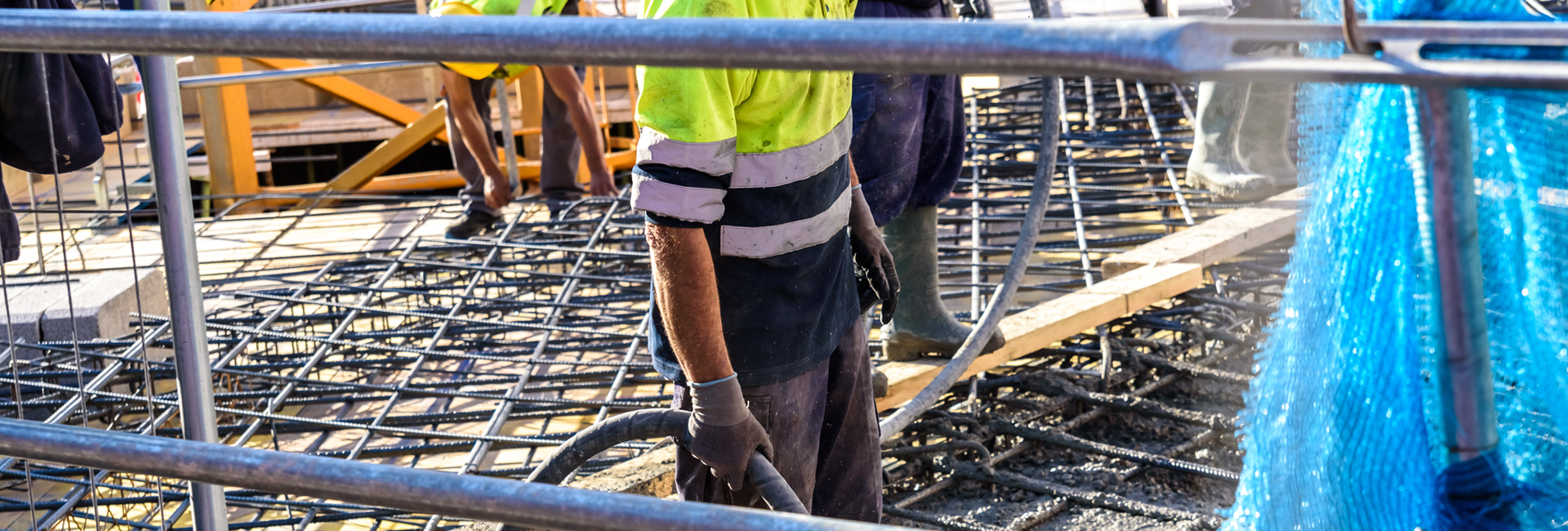India has witnessed a giant leap and acceleration in construction activities over the last couple of years, owing to its increased development, economic growth, foreign investments, migration and urbanization. One can see modern structures being built across the country. This has led to an increase in the types of materials required for construction. While traditional materials and processes continue to be used, innovative materials are also being employed to improve these structures in their entirety.
|
Table of Content
|
Building Materials – Steel and Concrete
There are several materials used in all types of construction ranging from timber, brick, fibre, mortar, wood, textiles and more. Here we will be focusing on the two core building materials that dominate most construction projects, namely steel and concrete. Both materials are widely used owing to their characteristics.
The advantage of using concrete for construction is that the raw materials – namely water and cement are cheap. It’s also capable of withstanding high-level tension forces and has high compressive strength. Along with these benefits however, there are some downsides to using this material, the primary one being concrete’s susceptibility to cracks and its inability to deliver in seismic zones.
- Concrete – The second most used material for construction is concrete. It is preferred for its durability and its ability to mould itself into any shape. Concrete as a material is able to withstand compressive stresses but not tensile stresses and is perfect for buildings with high tension loads. Concrete mixers or cement machines are used to make concrete.
The advantage of using concrete for construction is that the raw materials – namely water and cement are cheap. It’s also capable of withstanding high-level tension forces and has high compressive strength. Along with these benefits however, there are some downsides to using this material, the primary one being concrete’s susceptibility to cracks and its inability to deliver in seismic zones.
- Steel – This material is slowly but positively gaining popularity in construction projects. Steel is the ‘skeleton’ that gives shape to structures. Steel has high tensile quality and is often used along with concrete to strengthen structures. This material is durable, strong and malleable, making it ideal for most construction activities. The advantages of using steel include its lightness and high strength. It’s also less time consuming to erect steel structures. Along with this, steel is easier to transport and handle. So, if you procure steel directly from iron ore companies, you can easily transport it to the construction site. With these benefits, one should keep in mind that using steel requires the expertise of skilled labour and steel is susceptible to corrosion if not stored in dry areas.
Also read: Various Benefits & Advantages Of Steel In Our Lives
Sariya Vs. Concrete - Which is the Best Suited Material for a Construction Project?
TMT bars or Sariya, as they are locally known, are made of steel and iron ore. Concrete, on the other hand, is made of cement and water. While we have discussed the differences between the two materials, you must have questions about which material is better for construction. Well, on the basis of strength, both steel and concrete can be foundations for strong buildings. While the type of strength varies, both steel and concrete ensure safety and strength. As opposed to choosing either TMT bars or concrete, you can choose both. Concrete is often reinforced with steel TMT bars, which further strengthen the concrete. This way, you can benefit from the strength of both materials. Let’s delve deeper into the differences between steel and concrete.
Durability
Durability is one of the first factors to understand the difference between concrete and steel structures. Sariya (TMT bars) offer excellent tensile strength and flexibility and, hence, should be used to absorb tension forces. On the other hand, concrete is more resilient in compression, bringing out aspects such as structures and sturdiness in addition to resistance to weathering and corrosion. Nevertheless, it should be noted that Sariya is vulnerable to corrosion, which is why it requires proper protection inside the concrete matrix with desired levels of durability. On the other hand, concrete, which is also strong, can crack when subjected to tensional force and several other reasons hence must be reinforced. Sariya and concrete together build a long-lasting shelter by maintaining tensile and compressive strength.
Safety
The best Sariya for building gives tensile strength, which is very important to offer resistance to stretching forces, thus also improving building structures by taking the stress and dispersing it. On the other hand, the concrete material provided a better compressive strength, which is very appropriate for load and pressure bearing capacity. When both are incorporated to form reinforced concrete, the two make a complete entity where one compensates for the other’s shortcomings, thus giving a strong, safe structure.
Strength
Another aspect involves the steel vs concrete strength comparison. Sariya works by improving the tensile strength of concrete, which is the strength that it holds to resist bending or stretching forces. For this reason, it plays a significant role in the construction of frameworks, bridges, and high-rise buildings to support the structures. At the same time, concrete stands out for compression strength, bearing loads and offering a structure’s stability. Therefore, sariya can be said to be an excellent companion to concrete, which is commonly used in construction. Sariya’s tension strength matches concrete’s compressive strength in order to produce strong and long-lasting buildings.
Affordability
An additional advantage that Sariya has over other products is that it is flexible in terms of its grades and sizes and, as a result, can respond to the client by offering competitively priced solutions according to the needs of any project. Concrete expenses are relatively flexible due to aspects such as additives and transportation expenses. The use of concrete as a structural element can affect the price through changes in supply and demand, raw material prices, etc. Consequently, although sariya expenses are lower and tightly predicted, concrete has more chances to vary depending on the market situation or specific requirements for the material.
Fire Retardant
Since Sariya is made of steel, it incorporates the fundamental characteristic of fire resistance because the protective compound material has a relatively high melting point and bears high-temperature loads without experiencing a highly detrimental effect on its mechanical properties. It also retains its strength in fire although constant interaction with intense heat will compromise the strength of the material gradually. Concrete on the other hand gains its fire resistance through its make up that can endure fire for more hours before giving in to heat.
Also read: Ultimate Guide to Coarse Aggregate in Concrete Construction
Cost Comparison Between Steel and Concrete structures
The cost comparison between steel and concrete structures depends on the following factors. First of all, the construction of steel structures can be comparatively costly at the outset because steel is generally more expensive than concrete. Nevertheless, the use of steel structures generally results in shorter construction times, and this, in turn, has repercussions on labor expenses that may, in one way or another, counterbalance the initial cost of the material. They also allow for more extensive plan arrangements and less precise intermediate support structures; thus, they can reduce the general construction cost and the extent of enclosed floor areas.
As to concrete structures, they are usually cheaper in material costs, however, the concrete takes time to set. Thus. it will cost more in labor and time to complete a structure. Moreover, concrete is fancied precisely in seismic areas because it is capable of withstanding the impacts of an earthquake.
In the end, it results in comparing cost requirements of structures made of steel and concrete where specific design standards, labor expenses in the area, site accessibility and other factors such as the cost of long-term maintenance come into play at the time of deciding the type of structure depending on its economic feasibility and its structural suitability.
Choosing Top Quality Sariya from the Best TMT Bar Company in India
You can purchase concrete from any vendor, but when it comes to TMT bars – Sree Metaliks should be your first and last option. Sree Metaliks is one of the top TMT manufacturers in India and offers nothing but high-quality steel bars. Whether you need TMT bars for residential or commercial construction, Sree Metaliks has you covered. If you want to see the range and type of TMT bars available then simply log on to https://sreemetaliks.com/ . When you purchase from Sree Metaliks is when you know why we are considered the best TMT bar company in India.
For more information, please reach out to us at: Sales@sreemetaliks.com

